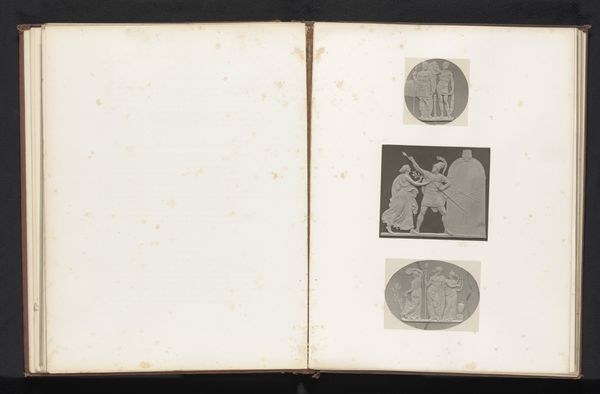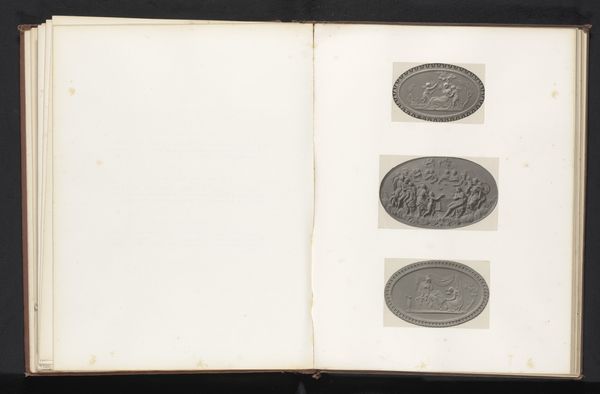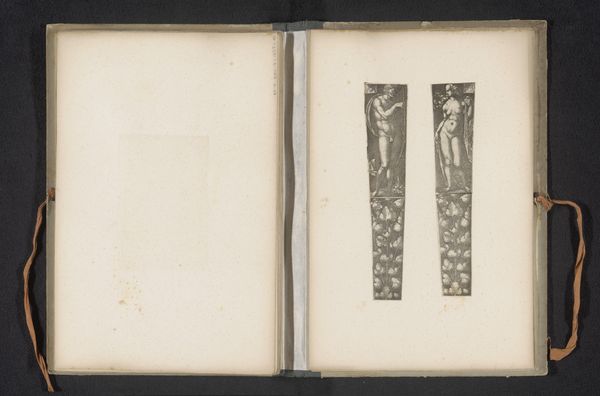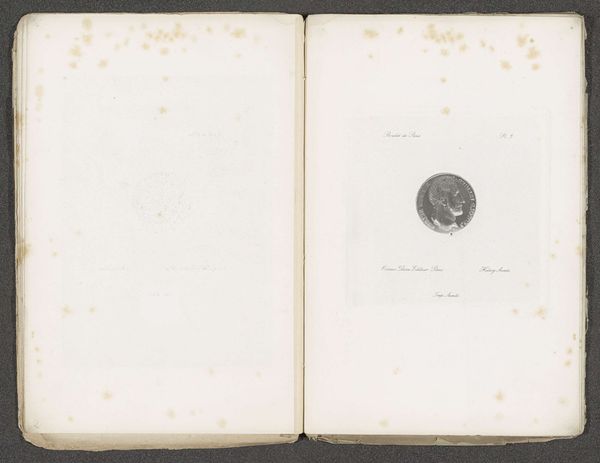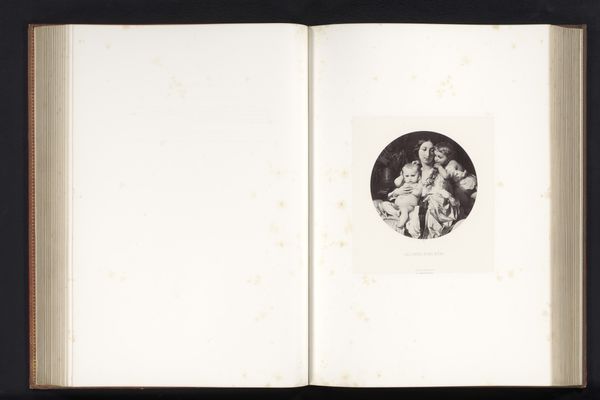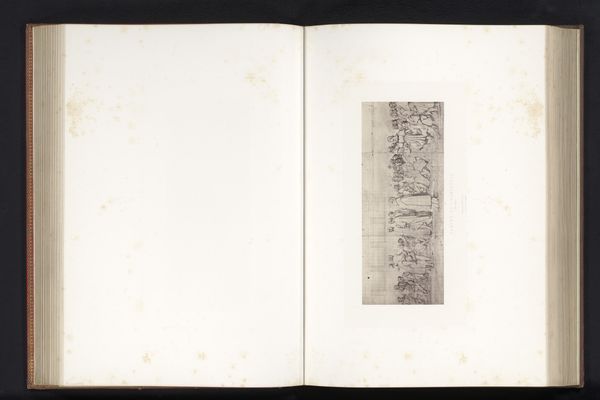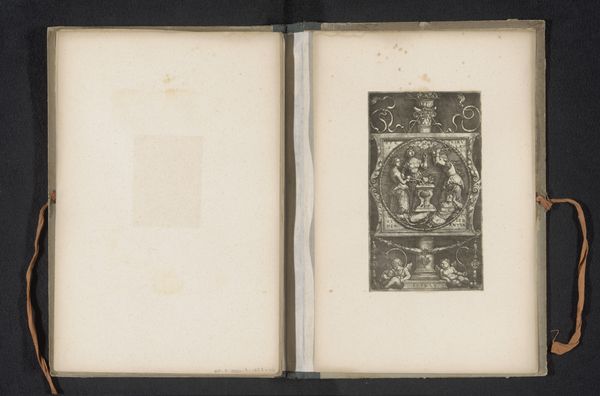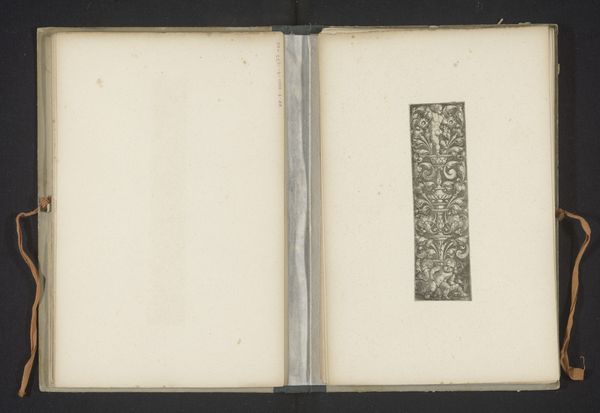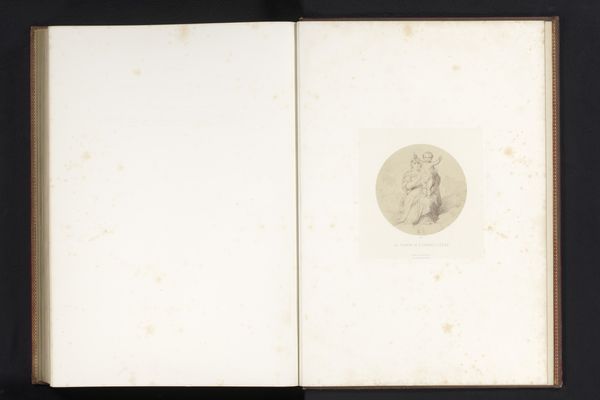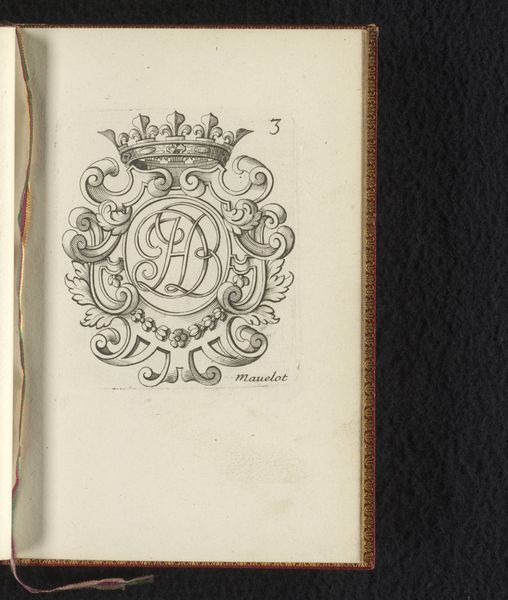
drawing, print, paper
#
portrait
#
drawing
# print
#
greek-and-roman-art
#
paper
#
11_renaissance
Dimensions: height 361 mm, width 270 mm
Copyright: Rijks Museum: Open Domain
Curator: This piece is entitled "Medaillon en veertien cameeën," a drawing and print by Joseph Cundall created sometime before 1873. What’s your immediate impression? Editor: It’s a collection of miniature narratives. A central heroic figure surrounded by these smaller vignettes. It feels cyclical, almost like a zodiac or a pantheon frozen in monochrome. Curator: Indeed. The reproductive print gives a very classical feeling. I'm struck by the labor involved in producing what appears to be a series of cameos, meticulously rendered and then carefully reproduced in a printmaking process. Each little cameo probably took an artisan a significant amount of time to make. Editor: Absolutely. I’m immediately drawn to the figure in the center, seemingly a Roman hero. The cameos encircling him remind me of orbiting planets or perhaps figures in his mythology, little visual footnotes. Curator: Consider how each cameo encapsulates a complete, albeit minuscule, scene. The artistry is impressive but so is the implied consumption; who was buying all these cameos? How did that affect their production and the status of the artisans who made them? Editor: That is very insightful. These classical figures represented on each cameo embody power, beauty, and mythological significance; yet as reproduced images, their influence becomes wider. I think the printing gives it almost a sense of democratic imagery, like spreading ideas through multiples. Curator: And yet, these are reproduced representations of elite objects—status symbols of a certain class. How does the act of mass production affect the unique cultural capital originally attached to a hand-carved cameo? What happens when that unique object is transferred into drawing, print, and paper? It's a flattening but also a potential spreading. Editor: Right. A democratizing gesture that also strips them of their unique aura. It speaks volumes about how cultures memorialize their figures and also replicate memory in accessible forms. Well, Joseph Cundall has really given us a lot to contemplate about representation here. Curator: Indeed! Looking at how reproduction changes cultural value adds a fascinating layer to viewing this artwork.
Comments
No comments
Be the first to comment and join the conversation on the ultimate creative platform.

